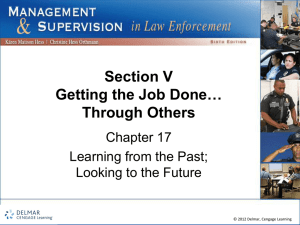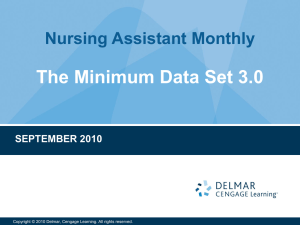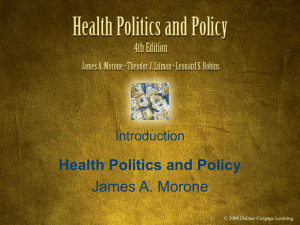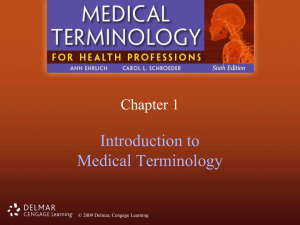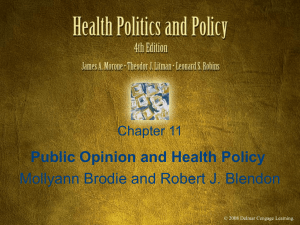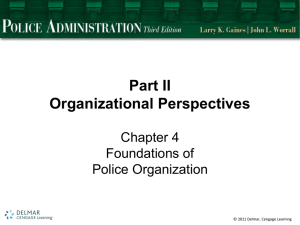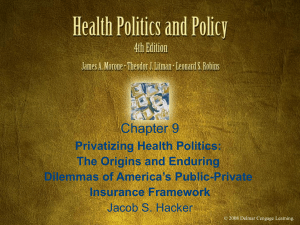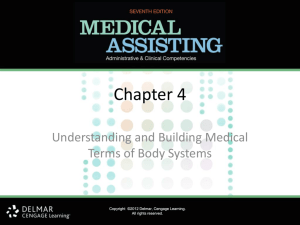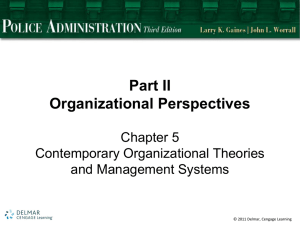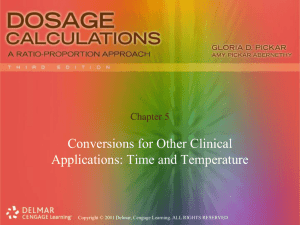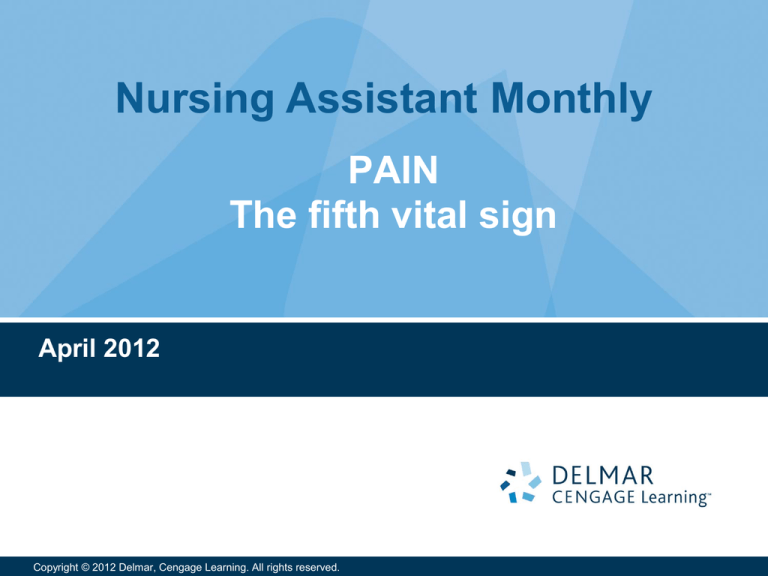
Nursing Assistant Monthly
PAIN
The fifth vital sign
April 2012
Copyright © 2012 Delmar, Cengage Learning. All rights reserved.
The purpose of pain
Pain is an important survival tool
– Warns of a possible threat to health and well-being
– Causes us to seek and remove its cause
– Without pain signals, even a minor injury could lead to illness or
perhaps death
Pain can also work against us
April 2012
Copyright © 2012 Delmar, Cengage Learning. All rights reserved.
Pain: the fifth vital sign
Types of pain
Acute
– Usually comes on rapidly
– Time limited
– Examples: post-operative pain, a finger cut, tension headache
Chronic
– Does not get better with time
– Examples: cancer pain, arthritis pain, pain from nerve damage
April 2012
Copyright © 2012 Delmar, Cengage Learning. All rights reserved.
Pain: the fifth vital sign
Our experience of pain depends on
Past experience with pain
Physical health
Emotional health
Messages/beliefs we learned about pain
For example:
– “complaining about pain is a sign of weakness”
– “pain is punishment for our wrongdoings”
April 2012
Copyright © 2012 Delmar, Cengage Learning. All rights reserved.
Pain: the fifth vital sign
Untreated or undertreated pain
A common problem in nursing homes
– Older adults tend to have conditions that cause pain (arthritis,
cancer, diabetes-related circulation problems)
– Non-verbal residents may not be able to report their pain to
caregivers
– Behaviors due to pain may be misinterpreted by staff
Untreated or undertreated pain affects life quality
– May impair ability to perform ADLs
– Leads to isolation, withdrawal from activities that were once
enjoyable
April 2012
Copyright © 2012 Delmar, Cengage Learning. All rights reserved.
Pain: the fifth vital sign
Pain and dementia
Many residents with dementia cannot report their pain
Behavior is a sign of an unmet need and may mean “I’m
hurting!”
Observe behavior, especially watch for CHANGES
– Wandering, restlessness, agitation
– Angry outbursts
– Resisting care (because it hurts!)
April 2012
Copyright © 2012 Delmar, Cengage Learning. All rights reserved.
Pain: the fifth vital sign
Your role as caregiver
Learn the signs of pain such as:
– Restlessness, crying, guarding a body part
– Withdrawn, sad, unable to sleep
– Change of behavior
Report any signs of pain to the nurse
Follow up to be sure the resident’s needs were addressed
April 2012
Copyright © 2012 Delmar, Cengage Learning. All rights reserved.
Pain: the fifth vital sign
Comfort measures for pain
Medications are only part of the answer
CNAs can help in other ways, such as:
– Proper positioning, frequent position changes
– Offering:
• A soothing warm bath, cup of herbal tea
• Gentle range of motion
• Backrub for relaxation
• To play calming music the resident enjoys
April 2012
Copyright © 2012 Delmar, Cengage Learning. All rights reserved.
Pain: the fifth vital sign
Involve the resident and family
For residents with chronic pain
If possible, ask the resident what usually helps his or her pain
Ask the family members if they know what helped the resident’s pain in
the past
Let the nurse know what you learn
April 2012
Copyright © 2012 Delmar, Cengage Learning. All rights reserved.
Pain: the fifth vital sign

